smithsonian institution

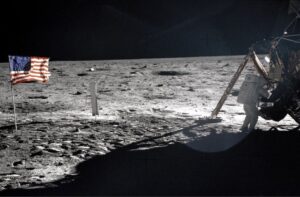 Neil Armstrong made history on July 20, 1969, when he became the first person to step on the moon. That is something we all have known about for a very long time. What we didn’t know about was that the Wright Brothers also made history on the moon. You might wonder how that could be, considering the fact that Orville and Wilber Wright died in 1948 and 1912, respectively. With that many years between their time and the 1969 moon landing, how could the Wright brothers possibly land on the moon. Well, it was simple really. As part of the mission, Armstrong and his team carried small bags of belongings called personal preference kits.
Neil Armstrong made history on July 20, 1969, when he became the first person to step on the moon. That is something we all have known about for a very long time. What we didn’t know about was that the Wright Brothers also made history on the moon. You might wonder how that could be, considering the fact that Orville and Wilber Wright died in 1948 and 1912, respectively. With that many years between their time and the 1969 moon landing, how could the Wright brothers possibly land on the moon. Well, it was simple really. As part of the mission, Armstrong and his team carried small bags of belongings called personal preference kits.
The men were supposed to choose things that had meaning to them and maybe even to the mission they were on. In Armstrong’s bag were souvenirs of another important aircraft… believe it or not, they were parts of the fabric and propeller from the Wright Flyer, flown by Armstrong’s fellow Ohioans, Wilbur and Orville Wright, on December 17, 1903. He must have felt a connection to them since all three of them were from Ohio. Some of those souvenirs remained with Armstrong after the flight to the moon, while some of the others went to the Smithsonian Institution.
In an interesting sidenote, another swatch of fabric from the Wright Flyer went with John Glenn, when he went into orbit aboard the space shuttle Discovery in 1998, and a postage-stamp-size piece has gone to Mars aboard the Ingenuity helicopter. It makes sense that the men who first made flight possible, should somehow have a place in what would have been the future of flight for them, if they were still alive. The Wright brothers started something with that first plane, and it wasn’t just flight. Without that first flight, space travel would never have been possible. They started the ball rolling on an amazing future of space exploration. What mor fitting tribute could there be that to take part of that first plane into space and allow it to land on the moon, mars, or just to be in flight in space at all.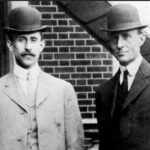
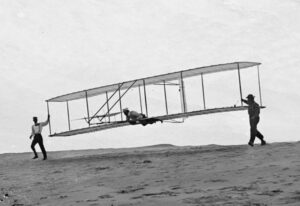
Bringing the Wright brothers into space by proxy was an amazing feat, but there was one other thing that I found odd anyway. When they mission returned home, they actually had to go through customs. That whole thought made me laugh. I mean…what did they think was going to be “smuggled” in, anyway? Nevertheless, going through customs was a requirement, so customs it was.
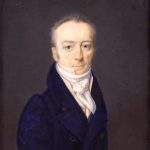
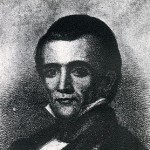 Before Bob and I were even married, I knew that he was related to one of our presidents…namely James Knox Polk. Since then, I have found that we are actually related to several presidents, but James K Polk remains the one with whom the link seems the most obvious. Still, while I knew of the relationship, there were things about him that I didn’t know. One of the most notable being his connection to the Smithsonian Institution. In 1829, one James Smithson died in Italy, and while most people would not think that would have impacted the United States of America, it actually did. So, who was Smithson anyway. Smithson had been a fellow of the venerable Royal Society of London from the age of 22, publishing numerous scientific papers on mineral composition, geology, and chemistry. In 1802, he overturned popular scientific opinion by proving that zinc carbonates were true carbonate minerals, and one type of zinc carbonate was later named Smithsonite in his honor.
Before Bob and I were even married, I knew that he was related to one of our presidents…namely James Knox Polk. Since then, I have found that we are actually related to several presidents, but James K Polk remains the one with whom the link seems the most obvious. Still, while I knew of the relationship, there were things about him that I didn’t know. One of the most notable being his connection to the Smithsonian Institution. In 1829, one James Smithson died in Italy, and while most people would not think that would have impacted the United States of America, it actually did. So, who was Smithson anyway. Smithson had been a fellow of the venerable Royal Society of London from the age of 22, publishing numerous scientific papers on mineral composition, geology, and chemistry. In 1802, he overturned popular scientific opinion by proving that zinc carbonates were true carbonate minerals, and one type of zinc carbonate was later named Smithsonite in his honor.
James Smithson’s will had one odd footnote to it, that in the end, would change everything. Smithson didn’t have much family, in fact, he had just one nephew at the time of his passing. His entire estate was willed to that nephew, with one condition attached to it. If his nephew should die without children, the entire estate was to go to “the United States of America, to found at Washington, under the name of the Smithsonian Institution, an Establishment for the increase and diffusion of knowledge.” Smithson’s curious bequest to a country that he had never visited garnered significant attention on both sides of the Atlantic Ocean. James Smithson was a scientist, who wasn’t well known, but he apparently had a dream for the United States…a country that somehow held his interest. Six years after his death, his nephew, Henry James Hungerford, indeed died without children, and on July 1, 1836, the United States Congress authorized acceptance of Smithson’s gift. President Andrew Jackson sent diplomat Richard Rush to England to negotiate for transfer of the funds, and two years later Rush set sail for home with 11 boxes containing a total of 104,960 gold sovereigns, 8 shillings, and 7 pence, as well as Smithson’s mineral collection, library, scientific notes, and personal effects. After the gold was melted down, it amounted to a fortune worth well over $500,000.
The money was sent to the United States with Smithson’s instructions for its use. It might have seemed like a simple request at the time of the will’s writing, but in the end, the money would sit in the bank waiting for a decade. The reason…a debate on how to use the money. Apparently, even though instructions for the money’s use were given, they did leave a few of the details up to the United States government. Finally, on this day August 10, 1846 James K Polk signed the Smithsonian Institution Act into law. After considering a series of recommendations, including the creation of a national university, a public library, or an astronomical observatory, Congress agreed that the bequest would support the creation of a museum, a library, and a program of research, publication, and collection in the sciences, arts, and history.
Today, the Smithsonian is composed of 19 museums and galleries including the recently announced National Museum of African American History and Culture, nine research facilities throughout the United States and the world, and the national zoo. Besides the original Smithsonian Institution Building, popularly known as the 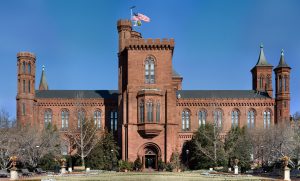 Castle, visitors to Washington DC, tour the National Museum of Natural History, which houses the natural science collections, the National Zoological Park, and the National Portrait Gallery. The National Museum of American History houses the original Star-Spangled Banner and other artifacts of United States history. The National Air and Space Museum has the distinction of being the most visited museum in the world, exhibiting such marvels of aviation and space history as the Wright brothers’ plane and Freedom 7, the space capsule that took the first American into space. John Smithson, the Smithsonian Institution’s great benefactor, is interred in a tomb in the Smithsonian Building. It has been a pretty amazing use of that money. I think James Smithson would be pleased.
Castle, visitors to Washington DC, tour the National Museum of Natural History, which houses the natural science collections, the National Zoological Park, and the National Portrait Gallery. The National Museum of American History houses the original Star-Spangled Banner and other artifacts of United States history. The National Air and Space Museum has the distinction of being the most visited museum in the world, exhibiting such marvels of aviation and space history as the Wright brothers’ plane and Freedom 7, the space capsule that took the first American into space. John Smithson, the Smithsonian Institution’s great benefactor, is interred in a tomb in the Smithsonian Building. It has been a pretty amazing use of that money. I think James Smithson would be pleased.

